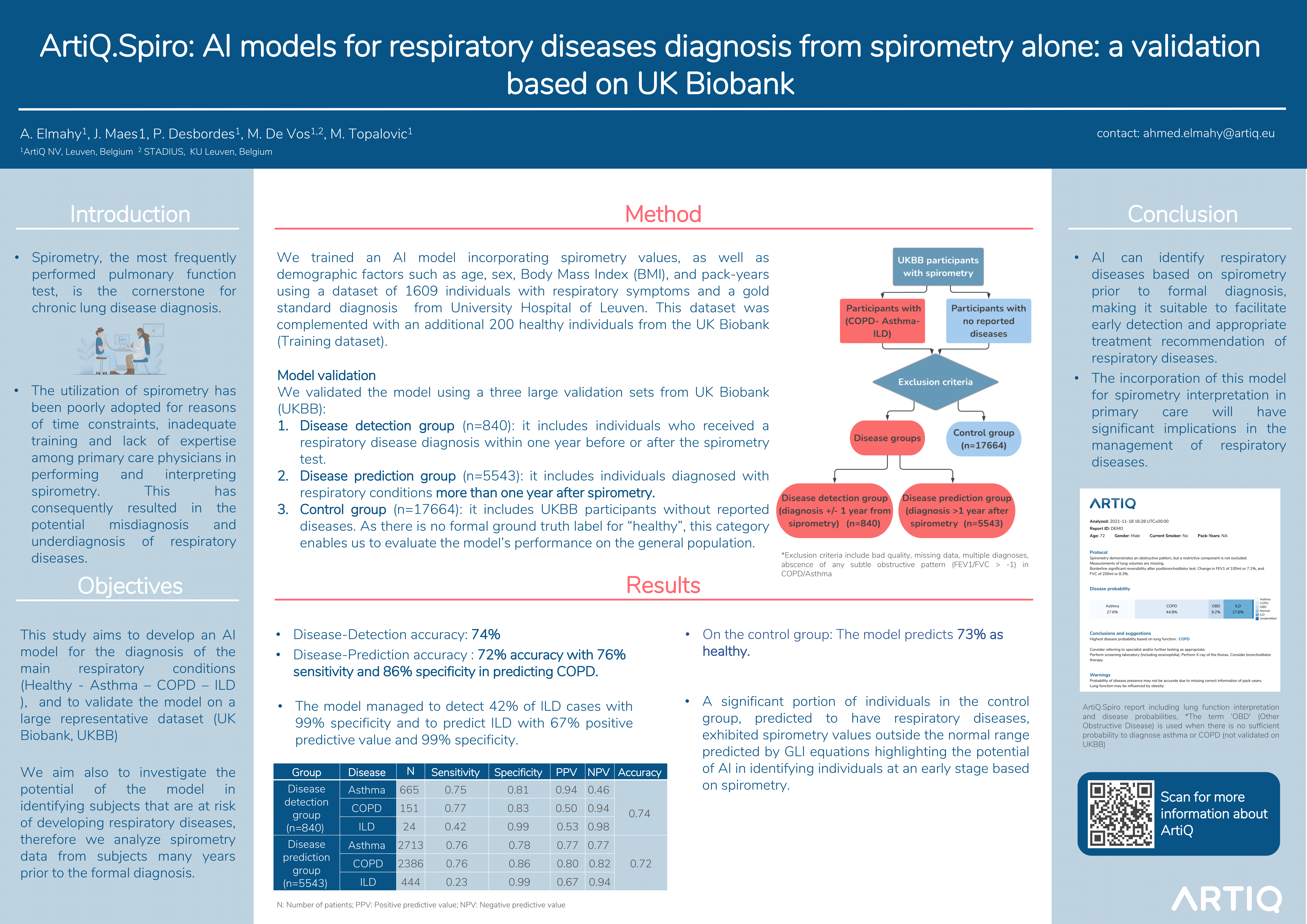AI models for respiratory diseases from spirometry alone: validation based on UK Biobank

Read the publication here.
RATIONALE:
AI can accurately diagnose respiratory diseases based on full lung function tests (Topalovic 2019). In primary care, often only spirometry with basic medical information (Age, Height, Weight, smoking history) is available. This study evaluates the ability of AI to diagnose respiratory diseases in primary care on a representative dataset (UK Biobank, UKBB) using spirometry.
METHODS
A Balanced Bagging Classifier model was trained on 1609 subjects who underwent lung function testing in a hospital, complemented with 500 healthy individuals from UKBB, then tested on an independent dataset extracted from UKBB. We included all physician-diagnosed patients with asthma, bronchiectasis, COPD and ILD that have acceptable quality spirometry done within a year before or after diagnosis and show, at least, subtle sign of abnormalities (FEV1/FVC Z-scores < -1 for obstructive diseases (Asthma, COPD, Bronchiectasis) and FEV1 Z-scores < -.5 for restrictive ones (ILD)).
RESULTS
The AI model achieved overall accuracy of 76%. Table 1 summarized sensitivity, specificity and PPV of the model across all disease categories.
CONCLUSION
We show that when spirometry shows subtle abnormalities (either restrictive or obstructive), AI can accurately differentiate between major respiratory diseases. Such an AI model can be especially useful in primary care settings to help guide physicians towards the right diagnosis.
Table1: Results of the AI model on UKBB test dataset
| Number of test subjects | Sensitivity | Specificity | PPV | |
| Asthma | 1455 | 0.75 | 0.84 | 0.87 |
| Bronchiectasis | 32 | 0.25 | 0.95 | 0.06 |
| COPD | 473 | 0.71 | 0.93 | 0.70 |
| Healthy* | 500 | 0.85 | 0.93 | 0.75 |
| ILD | 27 | 0.70 | 0.98 | 0.31 |
* 500 individuals not included in training
Authors:
Ahmed Elmahy, Julie Maes, Paul Desbordes, Maarten De Vos, Marko Topalovic
